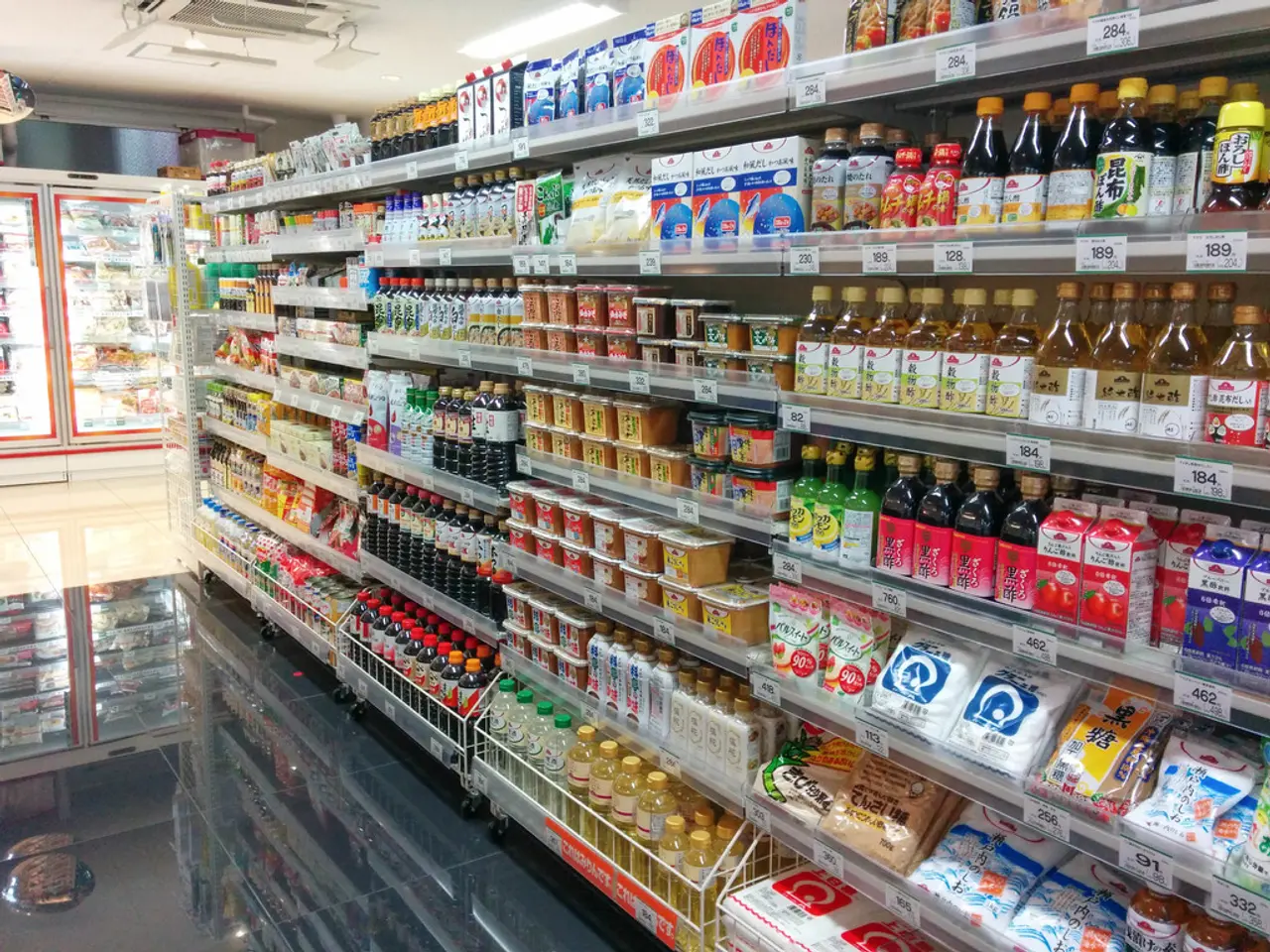The Transformation over the Decades of Trader Joe's: Unraveling the Strange Story Behind America's Oddest Supermarket
In the ever-evolving world of grocery retail, Trader Joe's stands out as a distinctive player, maintaining a strong presence through a unique brick-and-mortar strategy that prioritises experiential retail over digital expansion.
The journey of Trader Joe's began in 1967, when Joe Coulombe, a visionary entrepreneur, took over a struggling chain of convenience stores called Pronto Markets, transforming it into the thriving grocer we know today. Coulombe sold the business to German grocery magnate Theo Albrecht, owner of Aldi Nord, in 1979, but the Trader Joe's spirit remained intact.
Trader Joe's has grown steadily, expanding beyond its California roots in the 1990s, and now boasts nearly 600 stores across the United States. The company's success can be attributed to its strategic focus on creating a personal, engaging shopping environment, a curated product mix, and a strong employee culture that big-box retailers and online grocers find hard to replicate.
The stores are designed to be inviting and enjoyable, with custom-painted murals reflecting local neighbourhoods and a unique layout that encourages product discovery. Trader Joe's employees, referred to as "crew members," and store managers, called "captains" or "first mates," are a key part of this experience, providing exceptional customer service through their fluid role rotation and commitment to immediate assistance.
Trader Joe's has consciously chosen not to invest in e-commerce or omnichannel solutions, even as the COVID-19 pandemic accelerated the grocery industry's digital transformation. Instead, the company has doubled down on its in-store experience, offering a shopping environment that appeals to customers seeking a personal touch.
While competitors have raced into quick-commerce and rapid delivery models, Trader Joe's decision to remain a purely physical retailer stands as a counter-strategy. This approach has allowed Trader Joe's to maintain a competitive advantage by standing out as a distinctive, community-oriented grocer even in a market rapidly swayed by digital transformation.
However, Trader Joe's has faced criticism for contributing to gentrification in some lower-income neighbourhoods and for labour issues, with employees forming a union called Trader Joe's United and accusing the company of union-busting. The U.S. Department of Labor fined Trader Joe's over $217,000 for repeated workplace safety violations in 2024.
Despite these challenges, Trader Joe's continues to thrive, with sales per square foot almost twice that of Whole Foods. The company's success is rooted in its ability to leverage the "less can be more" principle, offering a curated product mix and a strong employee culture that big-box retailers and online grocers struggle to replicate.
Sources: [1] https://www.forbes.com/sites/forbesbusinesscouncil/2021/03/29/how-trader-joes-is-bucking-the-digital-trend-and-thriving-during-the-pandemic/?sh=7ab3328a6f4c [2] https://www.nytimes.com/2019/05/29/business/trader-joes-union.html [3] https://www.fastcompany.com/90517051/the-secrets-to-trader-joes-success [4] https://www.bloomberg.com/news/articles/2020-11-18/trader-joes-sales-surge-as-pandemic-boosts-grocery-stocks [5] https://www.supermarketnews.com/retail-details/trader-joes-expands-store-count-in-california-remains-top-market
- The unique brick-and-mortar strategy of Trader Joe's, emphasizing experiential retail over digital expansion, is a distinctive feature in the quickly evolving grocery retail industry.
- Trader Joe's, a pioneer in the industry, started as a struggling chain of convenience stores called Pronto Markets in 1967, transformed by visionary entrepreneur Joe Coulombe.
- In the 1990s, Trader Joe's expanded beyond California, and today, it operates nearly 600 stores across the United States, with sales per square foot almost twice that of Whole Foods.
- The success of Trader Joe's can be attributed to its personal and engaging shopping environment, curated product mix, and a strong employee culture that is hard for big-box retailers and online grocers to replicate.
- In contrast to competitors who have embraced quick-commerce and rapid delivery models, Trader Joe's remains a purely physical retailer, allowing it to stand out as a community-oriented grocer in a market rapidly transformed by digital trends.
- Despite challenges such as criticism for contributing to gentrification and labor issues, Trader Joe's has managed to thrive in the industry by leveraging the "less can be more" principle and offering a strong employee culture that large retailers and online grocers struggle to replicate.








